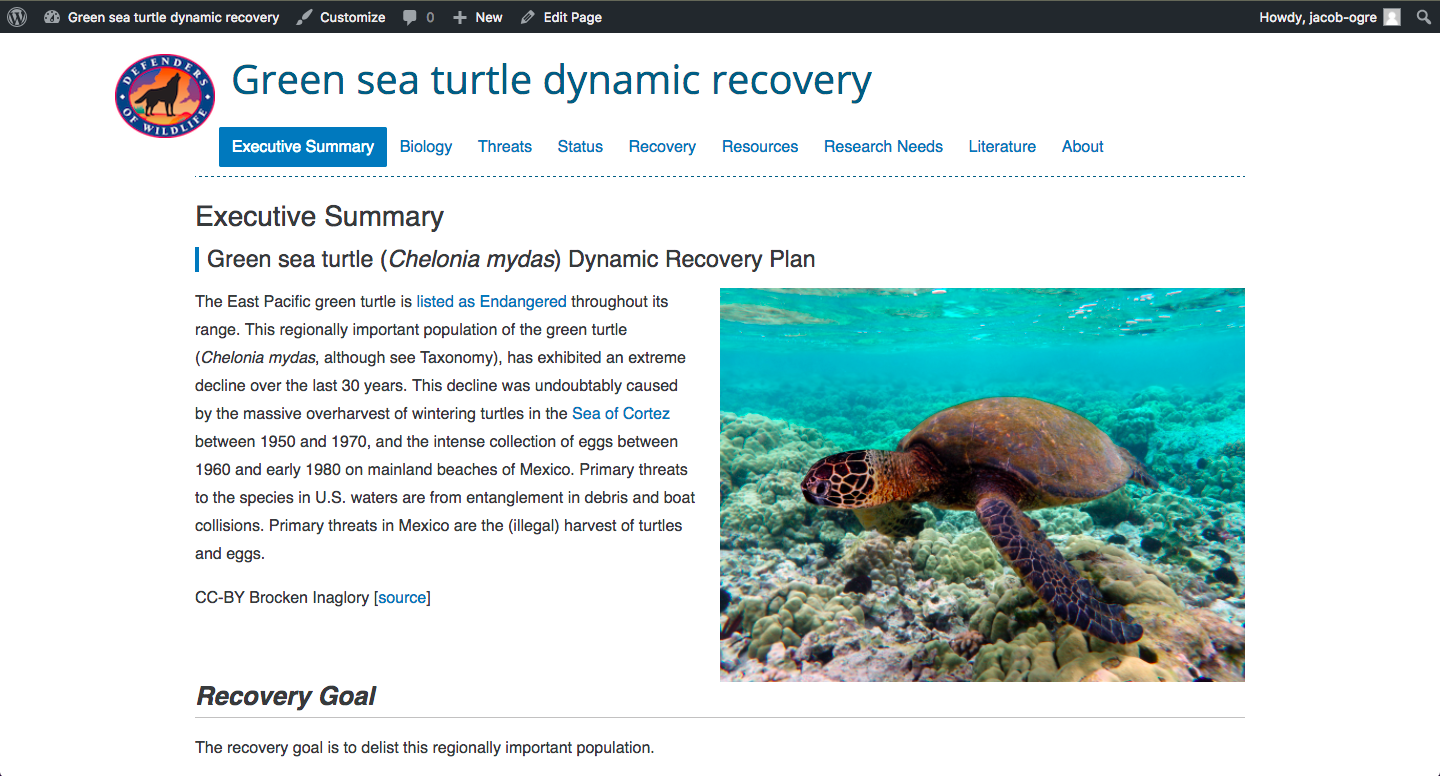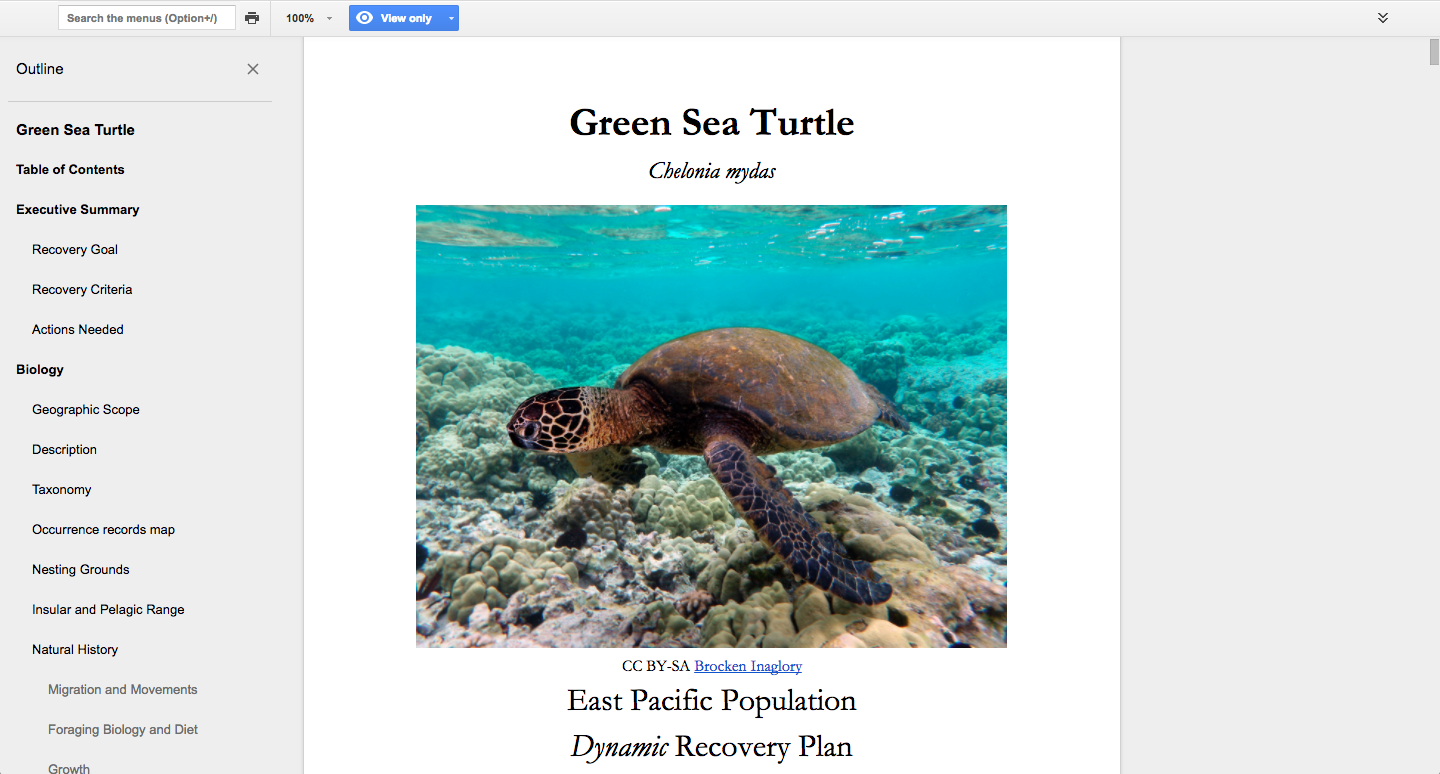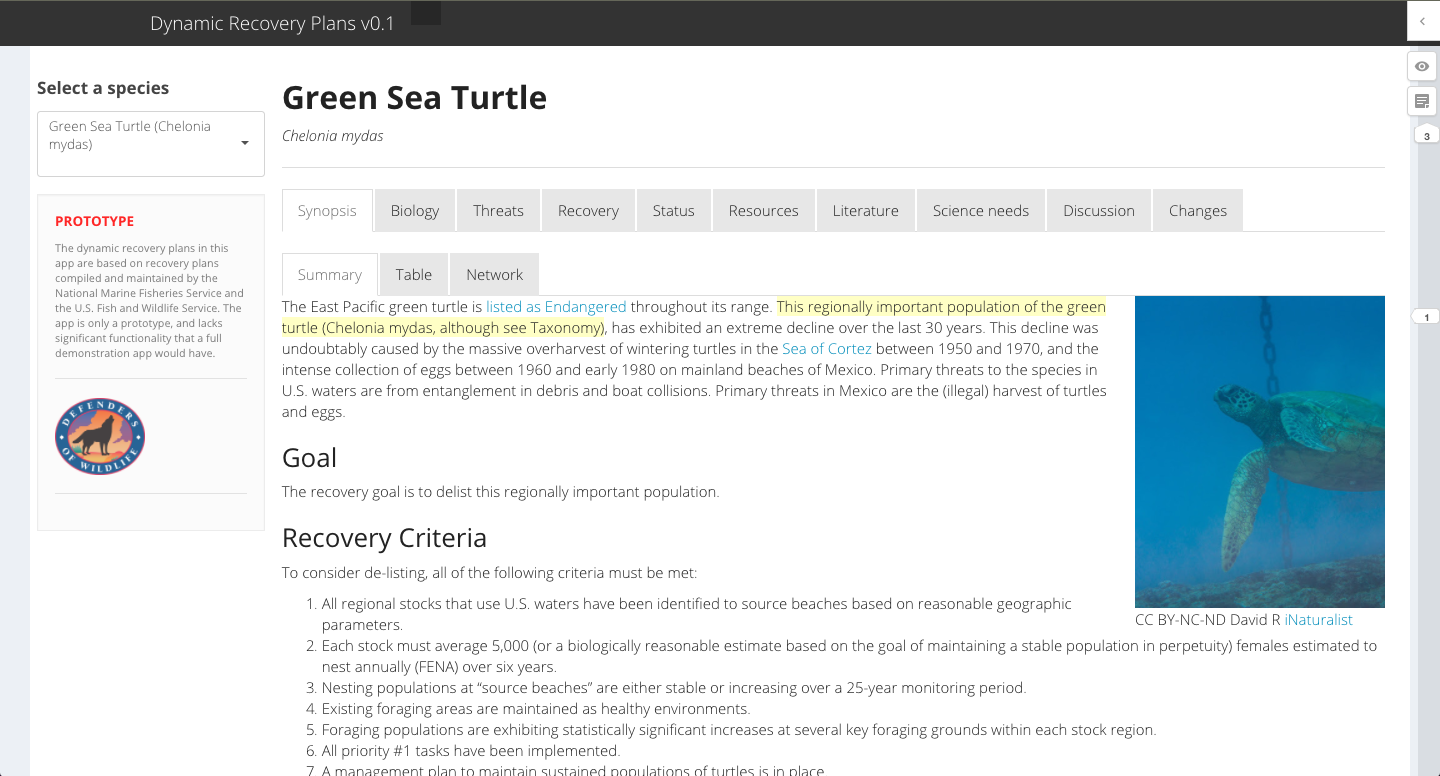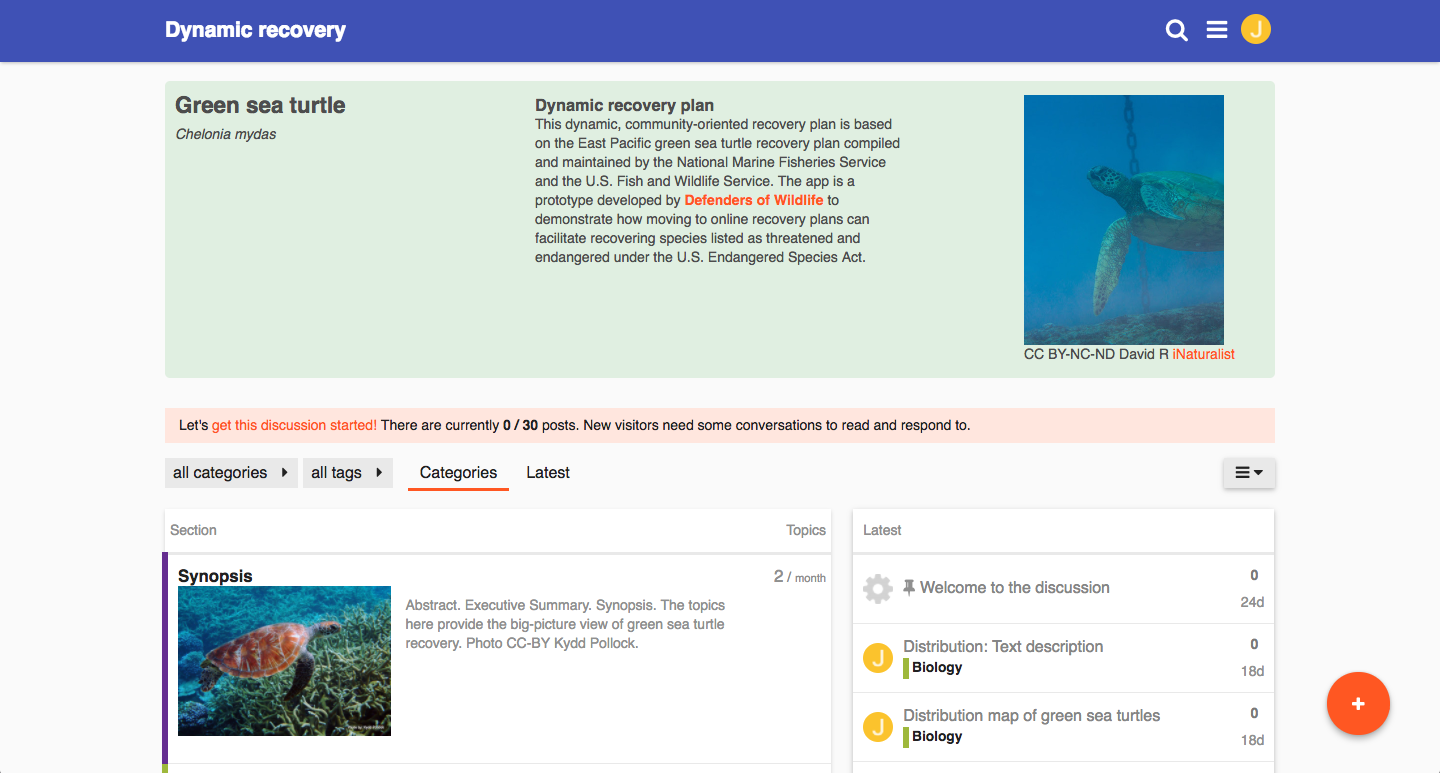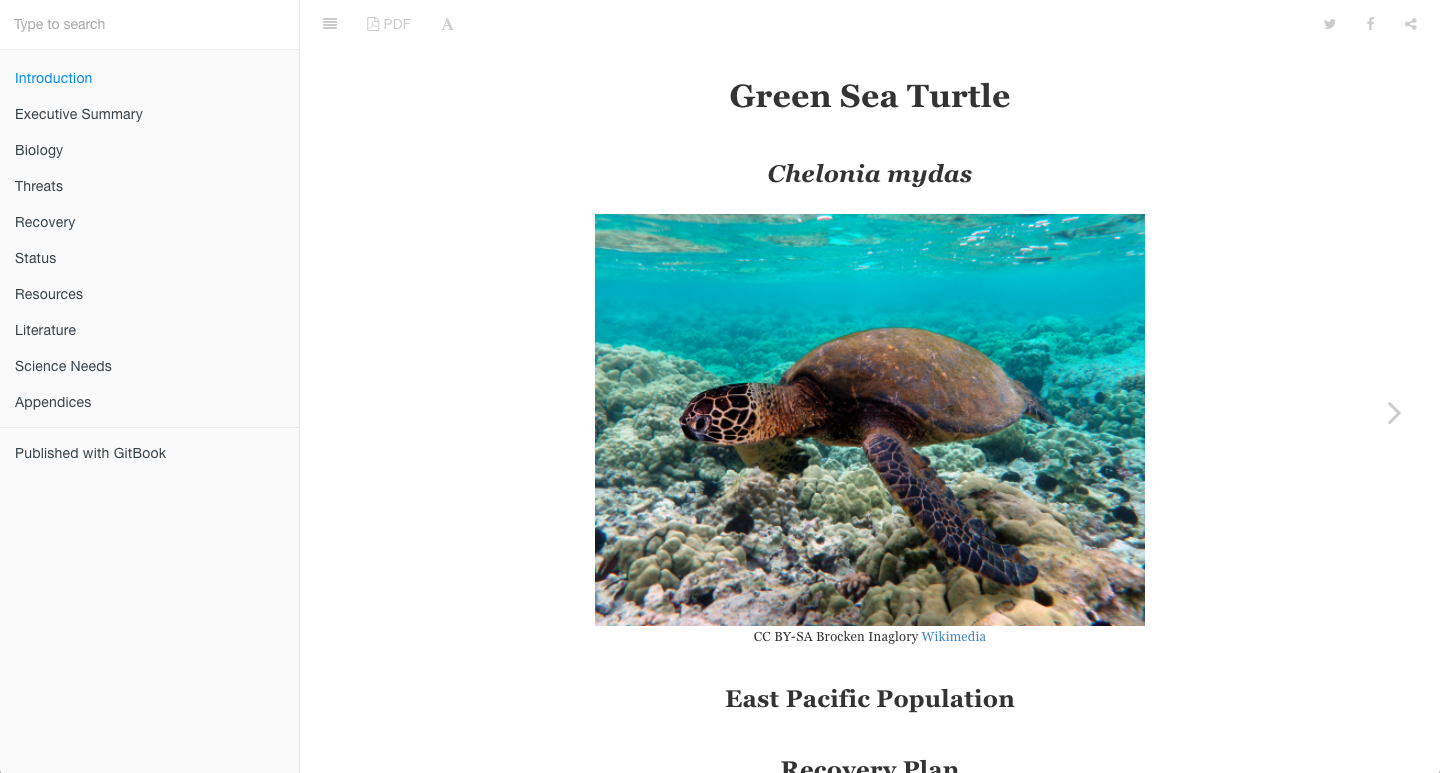Dynamic Recovery Plans
The U.S. Endangered Species Act directs the Fish and Wildlife Service (FWS) and the National Marine Fisheries Service (NMFS) to develop plans that guide the recovery of threatened and endangered species. All recovery plans to-date have been written and published on paper (or as PDFs), and have been rarely if ever updated. As of October 2016, half of all recovery plans are 19 years old or older. These out-of-date, non-interactive plans limit recovery and limit our (collective) ability to integrate other regulatory aspects of the ESA, such as section 7 consultation, with recovery. FWS and NMFS recognize the need to update how recovery planning is done.
Defenders of Wildlife has been developing a variety of alternative approaches and platforms to modernize recovery plans. Each prototype is, at this time, based on the green sea turtle recovery plan; below we briefly discuss and link to these alternatives. We have also written up a brief analysis of the strengths and weaknesses of these different dynamic recovery plan types.
A prototype dynamic recovery plan based on WordPress. The layout of this version is most-similar to the Shiny version, but rich text editing, security, collaboration, and other features already developed.
PROS
- WordPress is extremely well-developed and maintained (e.g., security, sharing)
- Easy-to-navigate interface (flexible)
CONS
- Some setup and maintenance required (but not much)
- Graph embedding by
iframes, but not direct
A dynamic recovery plan written using Google Docs. The layout looks like a 'normal' document, but can be rapidly updated and can link directly to external resources.
PROS
- Docs development and maintenance by Google; both FWS and NMFS use GSuite already
- Security, sharing, collaboration, and other features already integrated
CONS
- Not as flashy as some other options
- No graph embedding (live links are suitable)
An early prototype dynamic recovery plan written using Shiny for R. The layout is somewhat Wikipedia-esque, with tabs running along the top of the page. This prototype is a shell of a recovery plan: extensive 'back-end' work would need to be done to make this plan type fully functional.
PROS
- Novel interface for recovery plans
- Data-driven figures and tables integrate directly with the plan
CONS
- Considerably higher development costs (see intro blurb)
- Steeper learning curve for editing (once developed)
DISCONTINUTED
We spun down the server with the Discource instance because it was very unlikely to be adopted for dynamic recovery plans and we didn't need to pay for the server.
A dynamic recovery plan built using Discourse, which is a modern discussion board platform for "civilized discussion." The layout is driven by categories and the time when edits are made, i.e., is different than what many people may be used to.
PROS
- Novel, community-centric platform for recovery plans
- Fully developed, including security and editing tools
CONS
- Unfamiliar user interface, steeper learning curve for editing
- Graph embedding by
iframes, but not direct
A dynamic recovery plan built using GitBook. The layout is very "book-like," organized into chapters and sections, paginated. Content version control with git.
PROS
- Somewhat familiar book-like interface
- Fully developed, including security and editing tools
CONS
- Unfamiliar user interface for editing and version control
- Graph embedding by
iframes, but not direct
Contents CC BY-NC-SA Defenders of Wildlife, 2016
